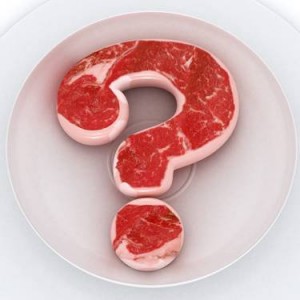Lesson Nine: Camera RAW vs JPG
Why Shoot RAW?
After a short shuffle across Canada from my new second home on the far Wast edge of Vancouver island, I’m back to Muskoka and awaiting a long photo-filled Spring and Summer ahead. ~ Also excited to have finished a redesigned site (www.davidpaulcrombie.com) for my Photography.
This lesson will focus on the RAW image file format and why you should use it to your advantage.
If you’re still shooting JPG’s, you haven’t considered image quality and post control, it’s time to take a lesson in “RAW”.
Before I explain why you should “Never” shoot in JPG mode on your Digital-SLR, let’s look at why you “Should” shoot in JPG mode.
In a few rare cases and under careful control, some do shoot in JPG mode.
1: In publication situations where editing the image is not considered ethical, some newspaper photographers will shoot in JPG to get the final image right out of the camera and onto the “Wire”.
2: Maybe you aren’t computer savvy or don’t think you need the extra control over the image. Or you are too busy to have the time for post editing.
3: Maybe you don’t own a computer or the necessary software to edit RAW files, or are just looking to shoot for fun.
All of these are fine reasons for shooting JPG and if you are not concerned with having the control to shoot the very best possible photos you can, then plop you camera on JPG and fire away. But in my eyes, photography is about being the ultimate perfectionist. Because if your photo isn’t exposed right, it’s exposed wrong.
In truth, all camera’s shoot RAW: When an image is exposed onto a camera’s sensor, it is exposing the raw data.
If you shoot in RAW, that data is saved and you get to look at it all later and decide what to use to make the best photo.
If you shoot JPG, the camera looks at your RAW file and makes a JPG from the data it thinks it needs and throws away the RAW data. (forever!)
If I’m out shooting an event or wedding, with fluctuations in sunlight, always changing directions of shooting and dozens of different artistic possibilities to choose from; I am bound to make a mistake in getting exposure perfect every time. Raw control makes sure that human or camera error or miscalculation doesn’t ruin a crucial image. ~ It’s my professional responsibility to shoot RAW and to utilize post editing to assure the very best image for my clients, and for myself. ~ Not to mention it’s super fun and very rewarding.
Let’s look at the significant differences in the formats. JPG ~vs~ RAW
JPG ~ When you shoot in jpg, the image you take is :
• a widely used format readable by any photo program or OS.
• compressed and tonally balanced by a computer algorythm. (inside your camera)
• smaller in file size, significantly smaller than the same photo in RAW
• lower in dynamic range & higher in contrast.
• Automatically sharpened
• Suitable for printing directly out of the camera.
Sometimes these can be deciding factors to use JPG, although in my opinion they are the prime reasons to avoid it!
RAW ~ Let’s have a look at the RAW file format :
• not actually a viewable photo, it requires you have a program such as Adobe Lightroom, Photoshop or similar editing software.
• a huge uncompressed file ~ (a 12 megapixel camera produces a 12 MB Raw file).
• higher in dynamic range & lower in contrast
• not ready to printing directly from the camera without post processing.
• a protected “read only” file (changes are saved as XMP “sidecar files” meaning the negative remains original).
With a RAW file, you have much more control to make a perfect image, and it becomes an added part of the creative process.
For as long as photographers have been shooting with film, either original or digital, they have been using darkroom techniques to deliver perfected photographs. Even your own local photo lab may have had to adjust your film photos if you messed up an ISO setting or underexposed the whole roll. Techniques like “Dodging” and “Burning” and bumping exposure values in post go back hundreds of years. We are just changing the way in which we apply these changes.
Ok, finally lets have a look at the control of RAW processing and how it affects colours and tones.
Play with the setting of the Flash movie below and notice the subtle changes and the not so subtle changes that dragging the sliders has on the image. I am using the Adobe Lightroom interface to show you these changes, and I have allowed two and sometimes three different locations for the sliders. This shows a wide range of the changes made, but in reality the chages are way more subtle when dragging the sliders and the controls go much farther than I have illustrated here. This will give you an idea of the control if you don’t know RAW; and if you do know raw, you may learn something about how the sliders affect certain tones and hues. Have fun with the example and go shoot some RAW images!

Hey great site I really enjoyed the read thank you for posting such valuable info and keeping up with the latest trends.
May 17, 2011 at 2:36 am